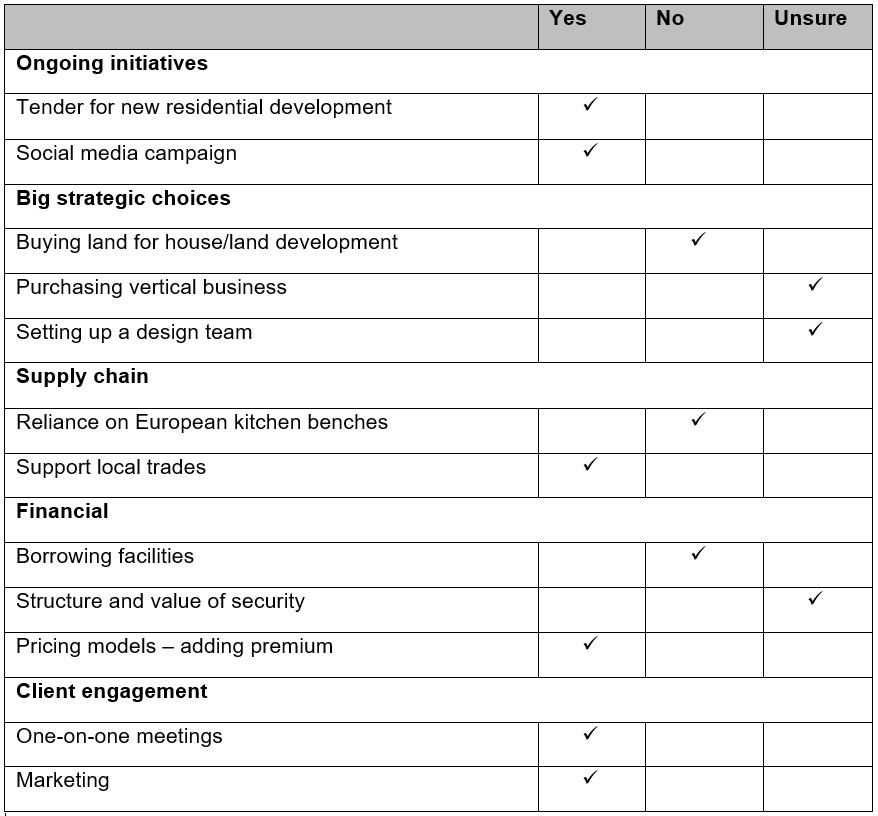If you fail to plan, you are planning to fail (so said Benjamin Franklin).
Weathering the storm of rising inflation and higher interest rates right now is a big challenge. But having a good business road map will help guarantee your business’s future success.
When it comes to uncertainty, most businesses are used to dealing with change – both economic and environmental. Business plans by their very nature are based on uncertainty. No one can predict the future, but it’s important to have a clearly articulated plan and strategy, albeit a fluid one.
Smart businesses examine and reaffirm (or reject) their overall purpose for being in business.
We’ve set out the five steps to a good business plan:
Reaffirm; Reality Check; Refocus; Reset; and Relaunch.
Reaffirm. Carry out a situation analysis.
Understand the environment you are operating in. Analyse your internal and external environment so you fully understand your capabilities, customers, and the business environment you are operating in.
Let’s take the example of a building company. Their ‘why’ might be to provide their clients with a smooth, pain-free building experience and a home to be proud of. How do they do this? By managing the design, build and procurement process for their clients and engaging with them throughout the process. The desired outcome being a great affordable home that their clients love.
Identify what’s important to your business.

Reality check. Do a business stocktake. What are you working with?
It’s important to do a stocktake of your business to fully understand your obligations and financial position. A Business Continuity Plan will highlight the most important parts of your business and identify the potential risks and key factors to maintain and protect those critical parts, and help you recover quickly if anything goes wrong. It will also help you highlight the things you can control, and those you can’t.
To help you, we’ve created a Business Continuity template.
Refocus. Think critically.
What can you do better or differently, and what changes (if any) do you need to make? A well-oiled machine gets the work done. Sometimes your internal processes can be a real competitive advantage. Think of McDonalds’ and its success. Its slick process model enables it to deliver a standardised product on time, every time, in countries all around the world.
Process mapping can be a great tool to help you work through your internal processes and identify any bottlenecks so you can see where improvements can be made. There’s a lot of resources available these days to help you carry out process mapping, and we can help too.
Reset. Push the button.
Define your strategy and where to from here?
Once the way ahead is clear, set your direction with a newly formulated strategy and business case. Whatever that looks like, it should be adaptable. Beware of any legal implication associated with a change of direction if you go down that route. Your reality check should have familiarised you with your current obligations and any potential issues.
Relaunch. Put your plan into action.
Hit the throttle. But watch closely.
Most business people don't like change. They like things to stay the same, but without change, you cannot grow.
Your new plan does not need to be perfect. Keep monitoring and modify it as you go.
